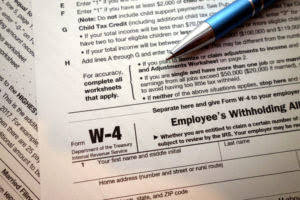The trust indenture prevents companies from taking the same action on their corporate bonds. Like bonds, preferred stocks are rated by the major credit rating companies, such as Standard & Poor’s and Moody’s. It promises that they will get their income stream eventually, even if there are delays. For companies, issuing cumulative dividends is a way to show commitment to their investors’ security and attract those noncumulative preferred stock looking for income stability.

Cumulative Dividend: What it Means, How it Works
Companies with unstable earnings may find the inflexibility of cumulative dividends too risky, limiting their ability to Accounting for Technology Companies adapt to changing business conditions. Limited reinvestment opportunities are another drawback, as companies may be forced to distribute cumulative dividends instead of reinvesting profits into the business. Cumulative preference shares can be converted into common stock under certain conditions.
Comparison with Common Stock

Later on, the company must pay these accumulated dividends before any other stock dividends. Delving into the mechanics of non-cumulative dividends reveals a unique financial construct, pivotal for investors who prioritize dividend income from their holdings in preferred stock. Preferred stockholders typically receive fixed dividends, whereas common stockholders’ dividends can vary based on company performance. Preferred stock is a type of equity investment that grants shareholders ownership rights in a company’s capital structure, entitling them to fixed dividends and priority in case of liquidation. In addition, bonds often have a term that matures after a certain amount of time.

Understanding Discount Yield: Calculation, Factors, and Market Impact
Non-cumulative dividends can have a profound impact on investor returns, especially in the case of callable preferred stock. Investors need to weigh the potential higher yields against the increased risk and lack of dividend security. Understanding the nuances of non-cumulative dividends is crucial for making informed Certified Public Accountant investment decisions and managing expectations regarding returns. Indeed, a good deal of preferred stock is issued by companies with lower credit ratings. Also, the board of directors can vote to suspend the dividend payments, and the preferred stockholders cannot sue them.

How Non-Cumulative Dividends Work
They aren’t locked into giving dividends that rise and fall in line with how the company does, rather they’re locked into paying fixed dividends. But this restriction can be a thorn in the side of investors looking to make a safe return and capital gains. The main distinction in terms of noncumulative and cumulative preferred stock is where unpaid dividends go. Preferred stock, cumulative, protects shareholders by accumulating or deferring skipped or deferred dividends that must be paid before dividends are paid to common shareholders.
- Non-cumulative dividends are a type of dividend payment that does not carry over.
- The first payments from the rest of the $1 billion will go to cumulative preferred stockholders, followed by noncumulative preferred stockholders, and finally common stockholders, if any money is still left.
- Cumulative dividends are intended to ensure investors receive at least a minimum return on their investment in the company.
- If a company faces financial difficulties and suspends dividend payments, non-cumulative shareholders may miss out on dividend income they might have expected.
- Common shareholders get voting rights, while preferred share holders typically don’t.
- These two types of dividend arrangements can affect your investment returns significantly, yet they often go misunderstood or overlooked by investors.
How to Calculate Dividends for Cumulative Preferred Stock
For example, the dividend must be distributed by a US company or a foreign company that trades in the US and the stock needs to be held by the investor for more than 60 days before the dividend was distributed. However, an individual investor looking into preferred stocks should carefully examine both their advantages and drawbacks. The starting point for research on a specific preferred is the stock’s prospectus, which you can often find online. Because every preferred stock has certain defining features relating to debt securities—including maturities which can be long—it’s vital to research the issuer before making a purchase. Because preferred shares are often compared with bonds and other debt instruments, let’s look at their similarities and differences.
